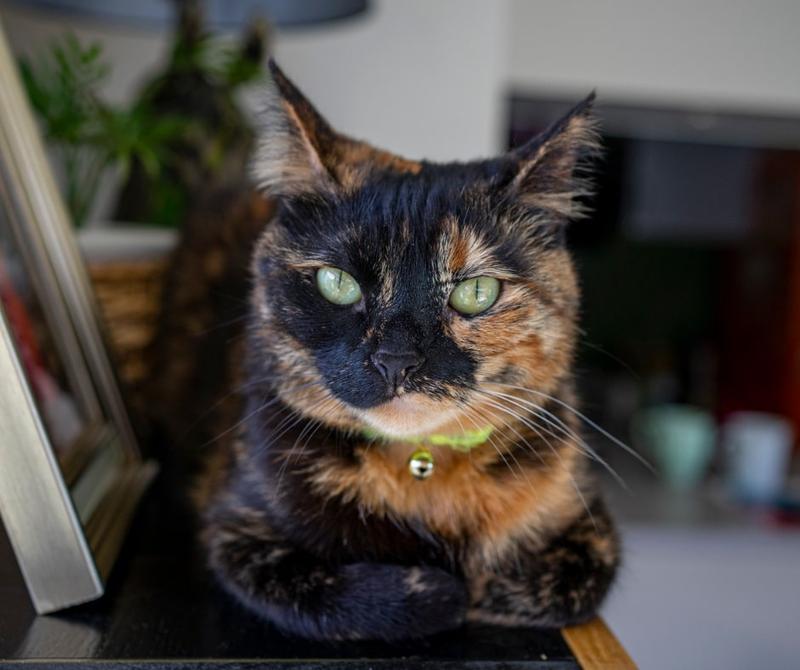The world of felines is replete with myriad colors, patterns and personalities, and one such captivating variety is the Torbie cat.
A stunning combination of Tortoiseshell and Tabby, the Torbie cat is a fascinating feline with a rich history, distinctive appearance and unique temperament.
Let’s embark on a journey to discover everything you need to know about this extraordinary cat breed, from their intriguing origin story to their health concerns and suitability for different lifestyles.
History of the torbie cat
The Torbie cat, also known as a patched tabby, is not a breed but a color pattern that can occur in many breeds.
This pattern is the result of a unique combination of genes, making every Torbie cat a special, one-of-a-kind creation. Although the exact origin of the Torbie pattern is unknown, the name itself is a portmanteau of “tortoiseshell” and “tabby,” indicating its dual heritage.
These cats have been adored for centuries around the world, with their distinct markings and vibrant personalities making them a favorite among cat lovers.
Torbie cat appearance
Torbie cats are renowned for their striking coat, which marries the mottled colors of a tortoisell with the familiar stripes of a tabby. They predominantly have a mix of red and black fur, with patches of tabby markings sprinkled in. The vibrancy of their coat can vary, with some cats displaying more muted hues and others boasting intense, bright colors.
Their eyes can be a variety of colors, including green, gold, or even blue. They are medium to large in size, and can have either short or long fur depending on their breed.
Torbie cat Temperament and Behavior
Torbie cats are known for their playful, outgoing personality. They are generally very sociable and enjoy being part of family activities. They love to explore and are often found prowling around their territory, be it a large house or a small apartment.
Despite their bold and adventurous nature, Torbie cats can also be quite affectionate and love to cuddle with their human family members. They are intelligent and curious, which means they enjoy interactive toys and puzzle feeders.
Care, Nutrition, and Feeding of Torbie cats
As with any cat, Torbies need a balanced diet to maintain optimal health. High-quality cat food, whether dry or wet, should make up the bulk of their diet.
They also need plenty of fresh water and occasional treats. It’s important to monitor their weight as obesity can lead to various health problems.
Grooming, Exercise and Enrichment
Torbie cats with short hair typically require minimal grooming, while those with longer hair may need regular brushing to prevent matting. As active and curious creatures, they also need plenty of exercise to stay fit and stimulated.
Toys, climbing trees, and interactive games can provide the mental and physical stimulation they need.
Routine Veterinary Care and Health Concerns
Regular vet visits are essential to keep Torbie cats healthy. They should be vaccinated and regularly checked for common cat ailments. Some Torbie cats may be prone to certain genetic conditions depending on their breed, so it’s important to discuss this with a vet.
Is a Torbie cat the right choice for you?
Torbie cats are versatile and can adapt to a variety of living situations. They’re as comfortable in a bustling family home as they are in a quieter, single-person household. Their sociable nature makes them good companions for other pets too.
Additional Reliable Online Resources about Torbie cats
1. The Cat Fanciers’ Association (https://cfa.org)
2. The International Cat Association (https://tica.org)
3. American Veterinary Medical Association (https://www.avma.org)
4. Cornell Feline Health Center (https://www.vet.cornell.edu)
5. PetMD (https://www.petmd.com)
In conclusion, Torbie cats, with their distinctive appearance and delightful personality, make wonderful pets. Their adaptable nature makes them suitable for various lifestyles. As long as they receive the love, care, and attention they deserve, they will bring joy and companionship to any home. After all, as French author Jean Cocteau once said, “I love cats because I enjoy my home; and little by little, they become its visible soul.”
Thank you for reading our guide to Torbie cats and kittens. Be sure to delve into our other unique and interesting resources about all different breeds and types of cats on Cats and Kittens Central.

